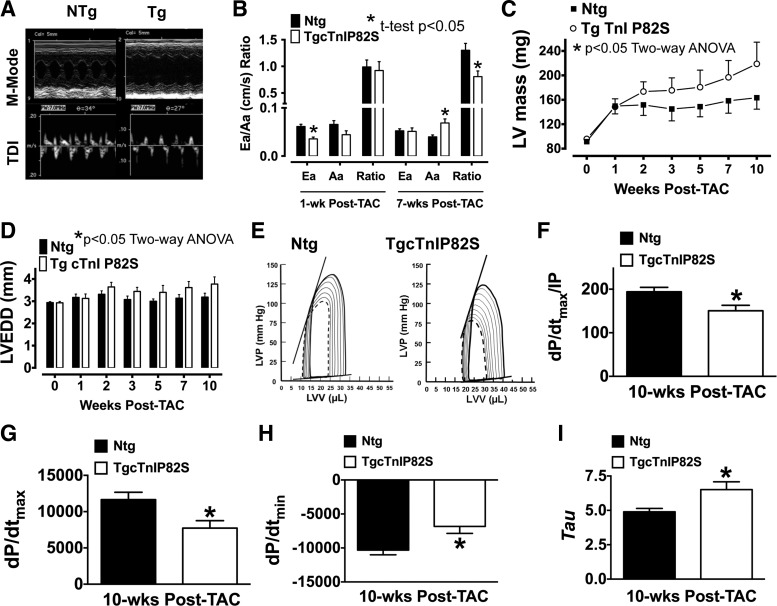Fig. 4.
cTnIP82S exacerbates hypertrophic response and decreases contractility during chronic pressure-overload. A: representative M-mode and tissue Doppler imaging (TDI) echocardiograms of Ntg and Tg 1-wk post-transverse aortic constriction (TAC). B: reduced transmitral flow dynamics are evident in Tg mice (*t-test, P < 0.05). Ea, early diastolic myocardial velocity; Aa, late diastolic myocardial velocity. Left ventricular (LV) mass (C) and LV chamber dilatation (D) are significantly influenced by Tg genotype (*two-way ANOVA, P < 0.05). LVEDD, left ventricular end diastolic dimension. E: representative PV loops of Ntg and Tg 10 wk post-TAC at baseline (dashed line) and after imposing afterload (dashed line), respectively. Note that, although there is a right and upward shift of PV loop (contrary to a typical adequate contractility response), Ntg mice (n = 6) have overall better baseline and afterload contractility. This is clearly illustrated in F–I, showing PV loop parameters that were significantly changed in Tg mice (n = 6). F: dP/dtmax/IP. G: dP/dtmax. H: dP/dtmin. I: τ. *P < 0.05. Values are means ± SE.

